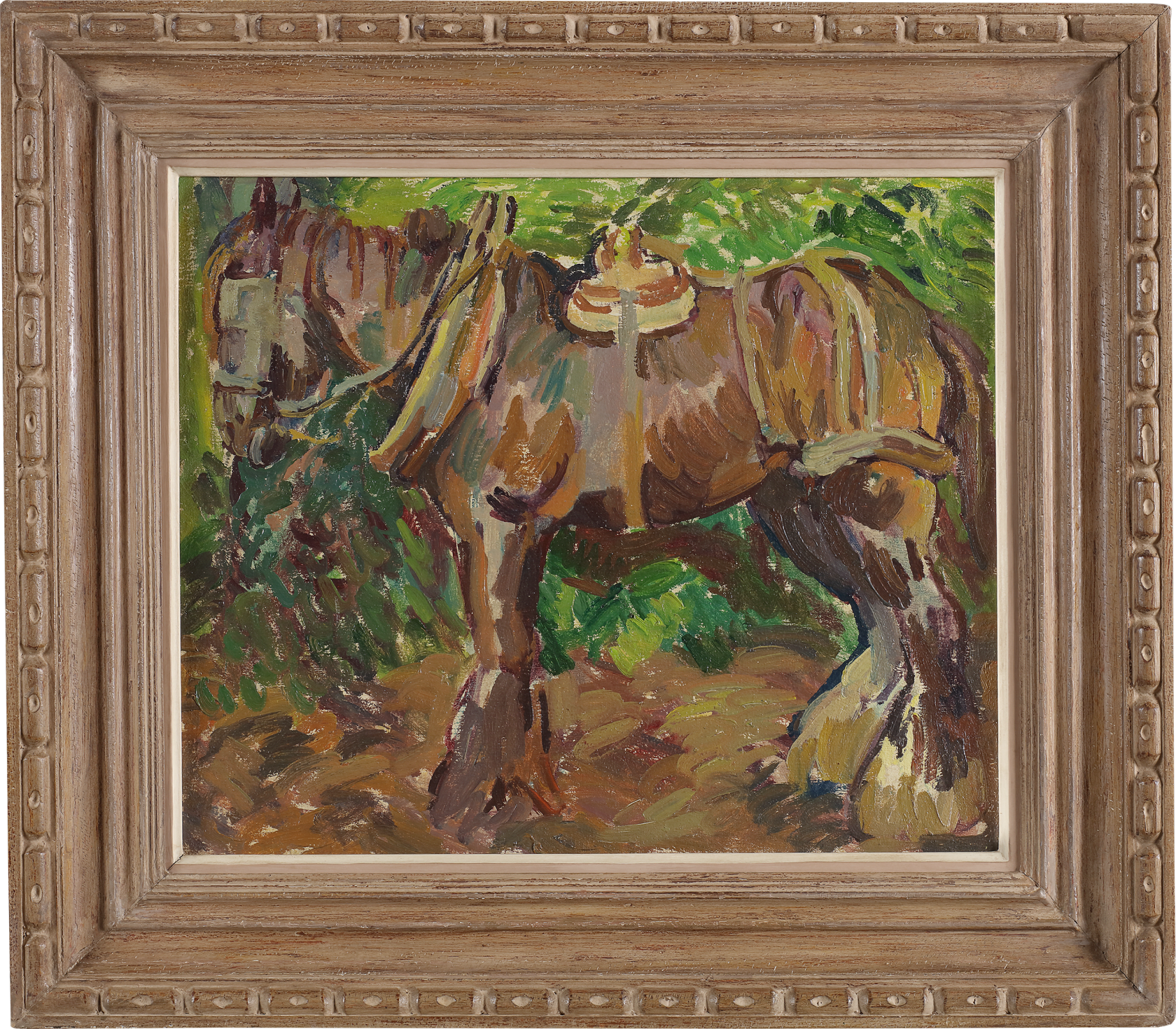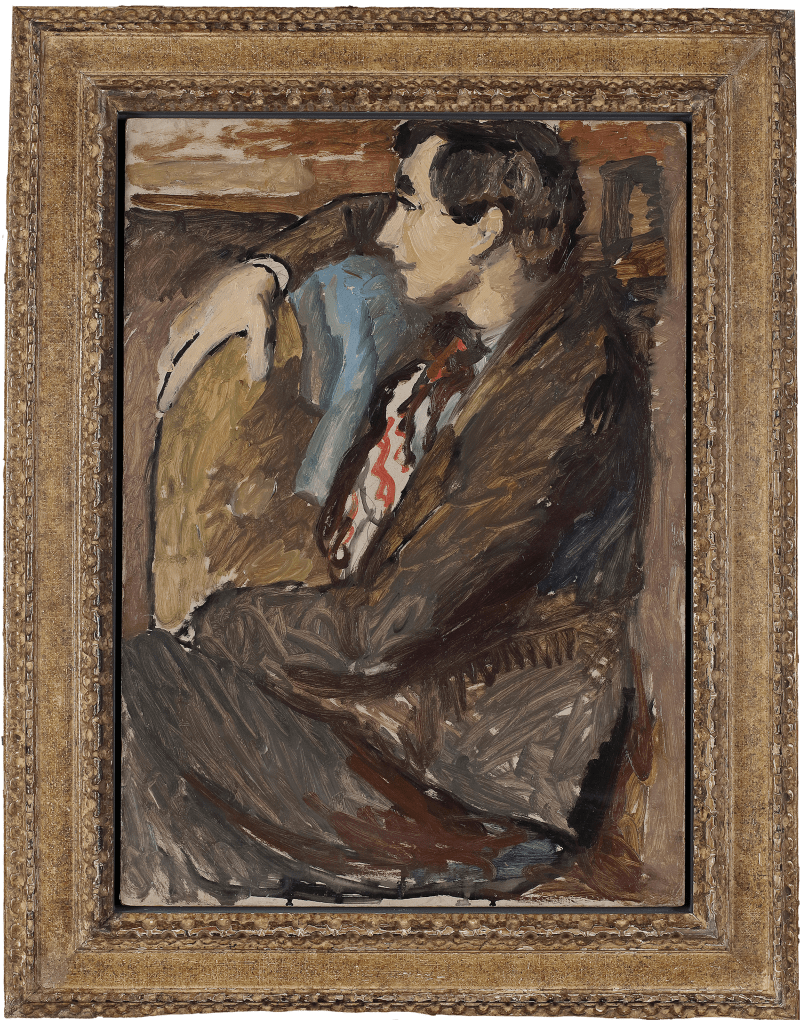According to Angelica Garnett, this characterful painting was likely painted at Charleston in the late 1920s or early 1930s and probably depicts one of the horses used for labour on the farm.[1] The subject is presented in profile against a loosely defined background, with the body depicted in thick, confident brushstrokes. Duncan Grant’s Post-Impressionist influences are clear in the bold application of colour and expressive surface; the brushwork is fluid and spontaneous which adds a sense of vigour.
Nestled in the Sussex countryside, Charleston served not only as Grant’s home but as a rural retreat and artistic hub for some of the twentieth century’s most influential writers and artists. During the time this work was painted, Charleston remained a lively centre of creative and intellectual activity, with Grant and his partner Vanessa Bell at its core. Though best known for its decorative interiors and legendary houseguests, Charleston was also a working farm, and its agricultural life proved a rich source...
According to Angelica Garnett, this characterful painting was likely painted at Charleston in the late 1920s or early 1930s and probably depicts one of the horses used for labour on the farm.[1] The subject is presented in profile against a loosely defined background, with the body depicted in thick, confident brushstrokes. Duncan Grant’s Post-Impressionist influences are clear in the bold application of colour and expressive surface; the brushwork is fluid and spontaneous which adds a sense of vigour.
Nestled in the Sussex countryside, Charleston served not only as Grant’s home but as a rural retreat and artistic hub for some of the twentieth century’s most influential writers and artists. During the time this work was painted, Charleston remained a lively centre of creative and intellectual activity, with Grant and his partner Vanessa Bell at its core. Though best known for its decorative interiors and legendary houseguests, Charleston was also a working farm, and its agricultural life proved a rich source of inspiration. Grant continuously sketched and painted the animals, buildings, and rhythms of rural labour around him. Numerous sketchbooks now held in the Charleston Trust’s collection are filled with studies of barns, chickens, sheep, and cattle.
[1] See scan of accompanying letter dated 7th March 1984.











